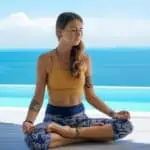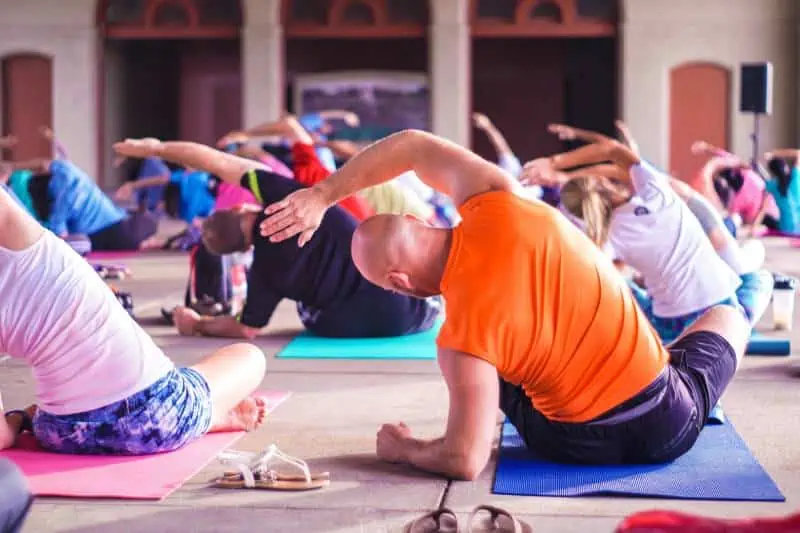Listen to this article:
Key Takeaway
Gentle yoga sequences offer a soothing entry point for beginners, focusing on ease and alignment with styles like Hatha, Iyengar, and Restorative yoga, ensuring a balanced and injury-free practice.
Download our FREE printable gentle yoga PDF sequence and get practicing!
Have you recently been to a yoga class where you found many postures too tricky or felt totally overwhelmed? If so, don’t despair or write yoga off entirely just yet.
There are many different yoga styles, some of which are easier than others. For example, Ashtanga yoga is one of the most challenging styles, where many poses require a certain level of flexibility. Therefore, it’s not the most accessible or gentlest yoga practice for newbies.
If you’re new to yoga, it’s essential to ease yourself in by learning the basics and most accessible yoga poses first. So to help you prepare for classes at yoga studios, I’m sharing the most beginner-friendly yoga styles and a gentle yoga sequence that nearly anyone can do.
Contents
- 1 Why Is Yoga So Difficult?
- 2 What Yoga Styles Are Best For Beginners?
- 3 What Yoga Styles Are Best For Beginners?
- 4 Short & Gentle Yoga Sequence For Beginners
- 5 Final Tips For Getting Started With A Gentle Yoga Practice
- 6 Frequently Asked Questions
- 6.1 How often should I practice gentle yoga as a beginner?
- 6.2 What’s the difference between gentle yoga and other styles of yoga classes?
- 6.3 How long does it take to see benefits from gentle yoga?
- 6.4 Do I need special equipment or props for gentle yoga?
- 6.5 Can I do gentle yoga if I have injuries or physical limitations?
- 6.6 Was this helpful?
Why Is Yoga So Difficult?
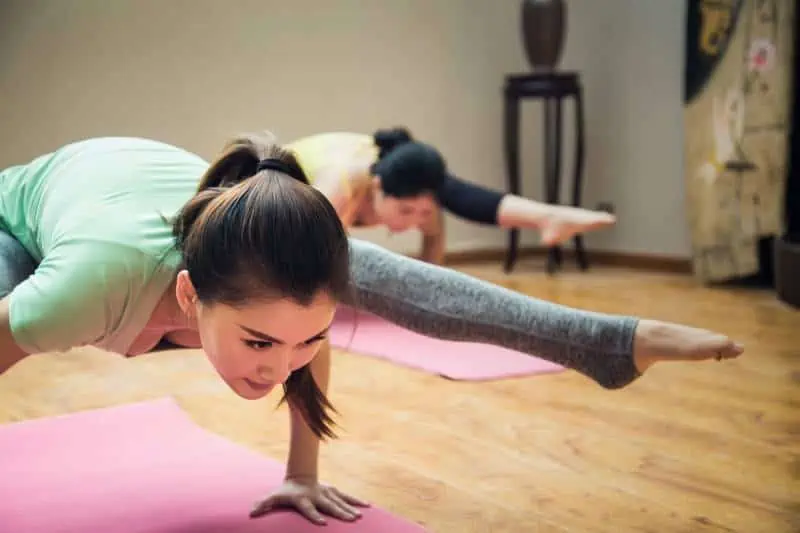
As mentioned, not all yoga classes are the same. Unfortunately, as a complete beginner with no knowledge of the different styles, it’s easy to walk into a yoga class that is not suited to your individual needs.
Finding yourself in a class where you struggle to do most of the asanas is enough to put you off for good. But if this has happened to you, don’t let it deter you. If you found it too tricky, you were likely not doing a beginner-friendly, gentle yoga style. Here are three yoga styles that you should avoid as a beginner.
Ashtanga yoga
Ashtanga is a traditional, disciplined style that involves a set sequence that must be followed in a particular order. There are six different Ashtanga series that you learn with a certified yoga instructor. You cannot start the next series until you master the current one.
The lack of freedom in this style makes it very challenging for beginners. Even the first series (known as the primary series) features many advanced poses that require a significant level of flexibility for the average person. Therefore, these yoga classes are better suited for experienced yoga practitioners looking to take their practice to the next level.
Power Yoga
Power yoga can be described as a yoga workout, as it combines traditional yoga poses with strength and conditioning exercises. Like fitness classes, this yoga style can help you build muscle mass, become stronger, and lose weight. However, it lacks the spiritual aspect of yoga and is far from the practice’s traditional roots.
Moreover, this physically challenging style pushes your body to the extreme, with additional core work and upper-body strengthening added to the yoga poses or transitions. Therefore, it’s not ideal if you want to learn basic yoga, if you are not already physically fit, or if you have injuries or health conditions.
Hot Yoga
Hot yoga is traditionally based on the Bikram style, a challenging set sequence of asanas. However, today, it refers to any dynamic yoga style practiced in a heated room. For Bikram yoga, the room is set to 105 degrees with 40% humidity to create a sauna-like feel.
The purpose of hot yoga is to release toxins and promote weight loss. In addition, the hot temperatures increase your flexibility so that you can stretch deeper. However, this style can be overwhelming for people without an existing yoga practice and leave you exhausted rather than replenished.
What Yoga Styles Are Best For Beginners?
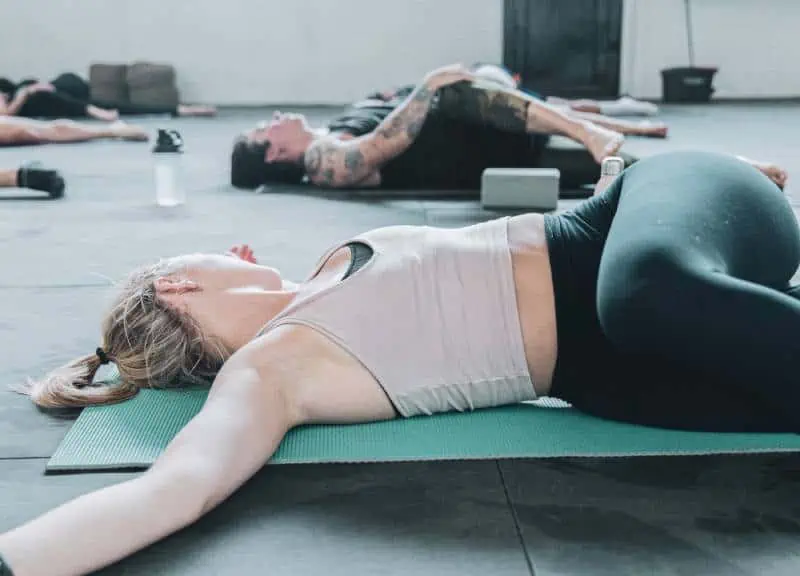
What Yoga Styles Are Best For Beginners?
Now that you know which yoga styles to avoid as a complete beginner, let’s discuss the gentler types of yoga you can do with zero experience.
Hatha yoga
Hatha is one of the oldest lineages of yoga that has now become an umbrella term for all dynamic styles, such as Vinyasa, Iyengar, and Ashtanga. Hatha translates to “sun and moon” in Sanskrit. Thus, this method involves balancing and uniting the opposing forces or energies in the body, which is done through physical postures, breathing techniques, and meditation.
However, a traditional Hatha class differs from the other dynamic styles that branch off this lineage. In authentic Hatha yoga practice, you hold static postures, typically taking five breaths in each one. Therefore, it is not a fast-paced style and gives you time to work on your alignment, which is ideal for beginners.
Iyengar yoga
Iyengar yoga places the most focus on alignment. It involves holding the poses for a long time while adjusting the body to find precise positioning. Iyengar yoga teachers provide very detailed cues and physical adjustments, which is an excellent way to comprehend how each asana should look and feel. It also features the same postures found in other styles, so you can take what you learn from Iyengar and apply it to different classes.
This is what I did when I started practicing yoga. I enjoyed faster-paced styles like Ashtanga and Vinyasa, but I was never sure of the proper alignment. Then I tried Iyengar yoga. Iyengar was not the most exciting yoga practice compared to the dynamic sequences. Still, I could see its importance, so I continued learning yoga for two years alongside other styles.
Now I advise my students to do the same. Knowing the correct alignment will prevent you from injuring yourself or harming your body in the more challenging styles.
Restorative yoga
Restorative yoga is best for anyone with injuries or existing health conditions that limit their mobility and range of movement. Unlike Hatha and Iyengar, Restorative yoga poses are all floor-based. You also hold the poses for longer and use lots of props to help you find comfort.
In this type of yoga class, the teacher will prompt you to relax your body. You typically don’t engage or strengthen the muscles; instead, you gently build flexibility. If you feel tension or pain, the yoga instructor will make the pose more supportive and comfortable by adding additional props.
Yin yoga
Like Restorative, Yin is a gentle yoga style as all postures are floor-based, and you hold them for some time (usually between one to five minutes). You also use props but not as much as in Restorative.
There is also no active strain on the muscles in Yin but a passive one that builds over time. This helps the stretch move past the superficial muscles, working the connective tissue like fascia, tendons, and ligaments. Yin also has roots in Traditional Chinese Medicine, and the poses target the meridians, improving the flow of chi in each energy channel.
Short & Gentle Yoga Sequence For Beginners
Learning some basic yoga poses will help you feel more confident and comfortable if you’re considering attending your first yoga class. I suggest trying the following gentle yoga sequence a few times to get familiar with practicing yoga.
Seated Meditation
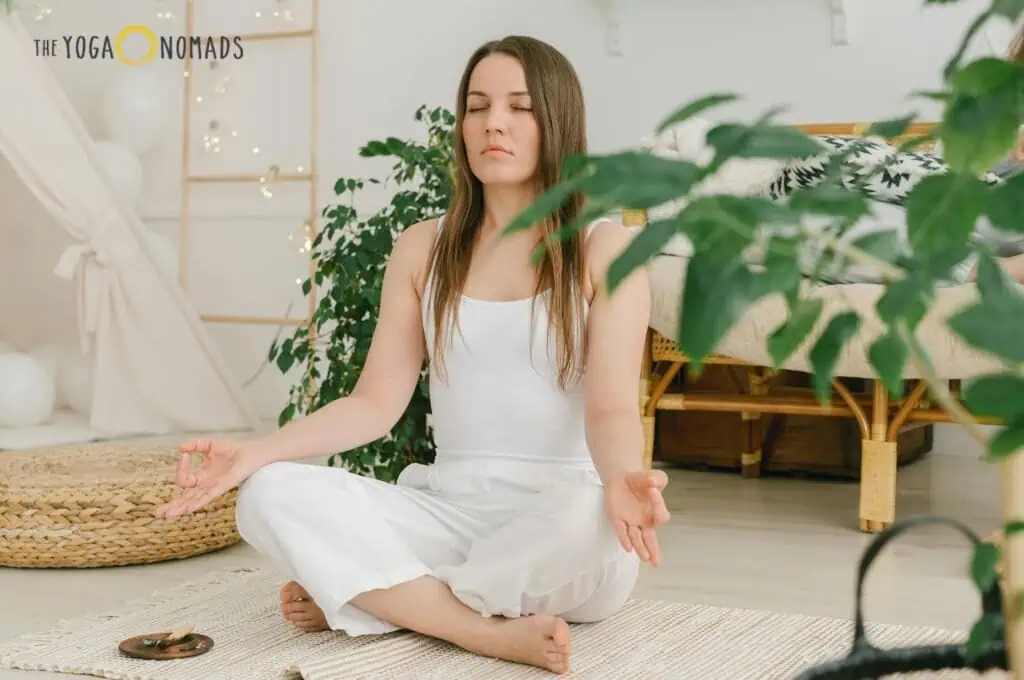
Start your gentle yoga session in a comfortable seated position with your legs crossed. You may like to sit on a cushion or pillow to elevate your hips and help lengthen your spine. If you find sitting with your legs crossed uncomfortable, try sitting against a wall with your legs extended.
Place your hands on your knees or thighs, and close your eyes. Bring your awareness to your breath and spend 3 to 5 minutes observing the natural rhythm of your breathing.
Starting your yoga session with meditation helps you focus and center yourself, mentally preparing for the practice ahead.
Neck stretches
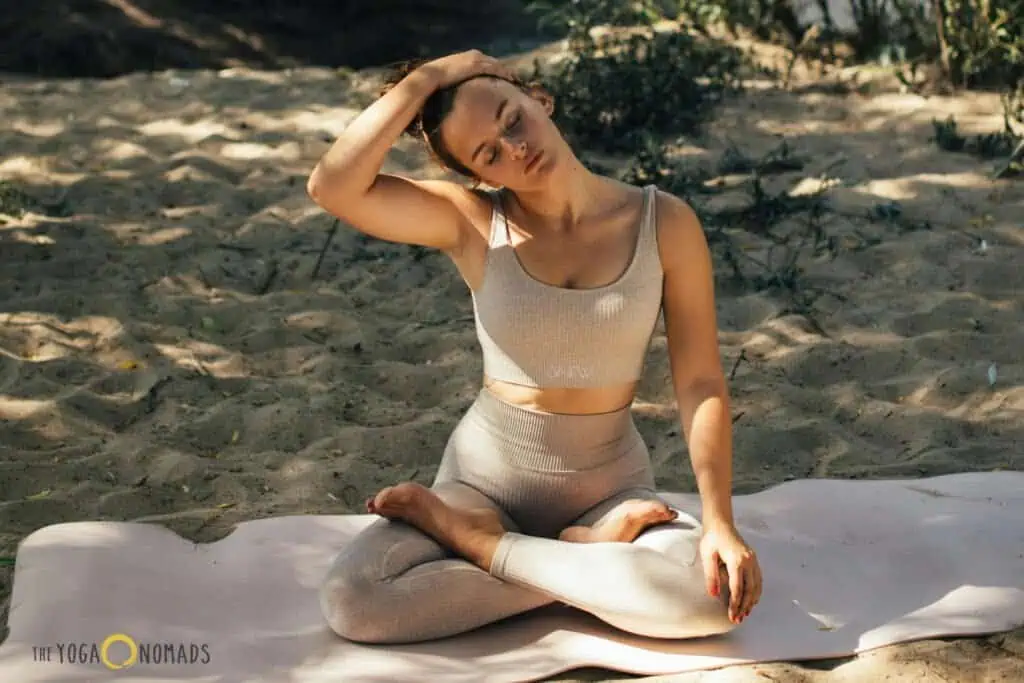
While seated, let your head drop to the right side, bringing your ear towards the shoulder. Take a few breaths here, feeling the stretch on the left side of the neck. Then, slowly release your head back to neutral and stretch the opposite side.
Next, lower your chin to your chest to stretch the back of your neck. For more intensity, clasp your fingers and place your hands on the back of your head. Don’t press; just let the weight of your hands deepen the stretch.
After a few breaths, return your head to a neutral position.
Seated Twist
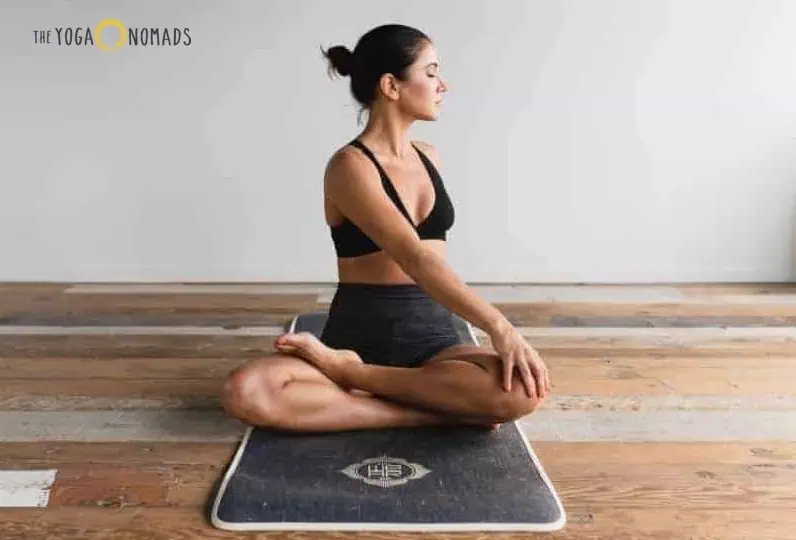
Begin in a cross-legged seated position, sitting tall. As you inhale, reach the crown of your head skyward to lengthen your spine even more. With your exhale, slowly begin twisting to the right side, gently drawing your right shoulder back. Place your left hand gently on your right knee.
Pause to take another inhale and then twist a little more on the exhale. Ensure the twist comes from your core, not from the upper body, and without using force.
Take 5 breaths, release, and repeat on the other side.
Cat/Cow
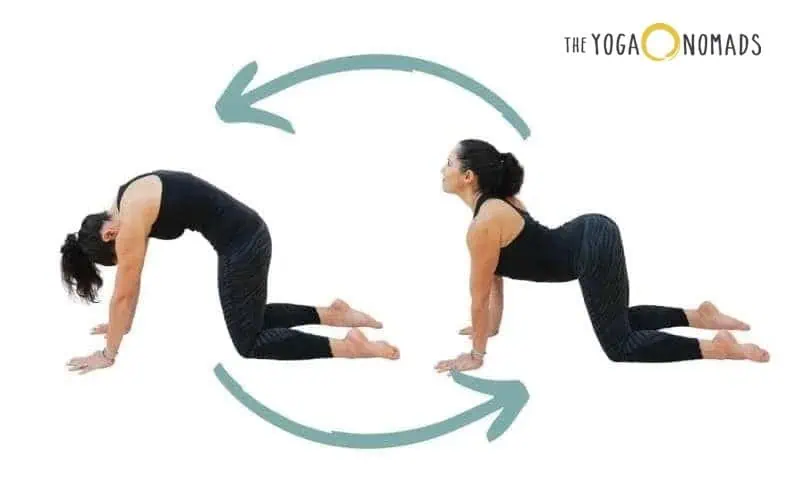
Come into a tabletop position on your hands and knees. Your hands should be about shoulder-width apart, with your hands directly under your shoulders. Align your knees underneath your hips.
Press your palms firmly into the mat as you inhale to lift the tailbone and arch the spine (Cow Pose). Here, gaze forward to open your chest. Next, exhale to tuck your tailbone under and round the spine, pressing your belly button in and dropping your chin to your chest (Cat Pose).
Repeat these Cat/Cow movements 5 times, flowing with your breath.
Sphinx Pose
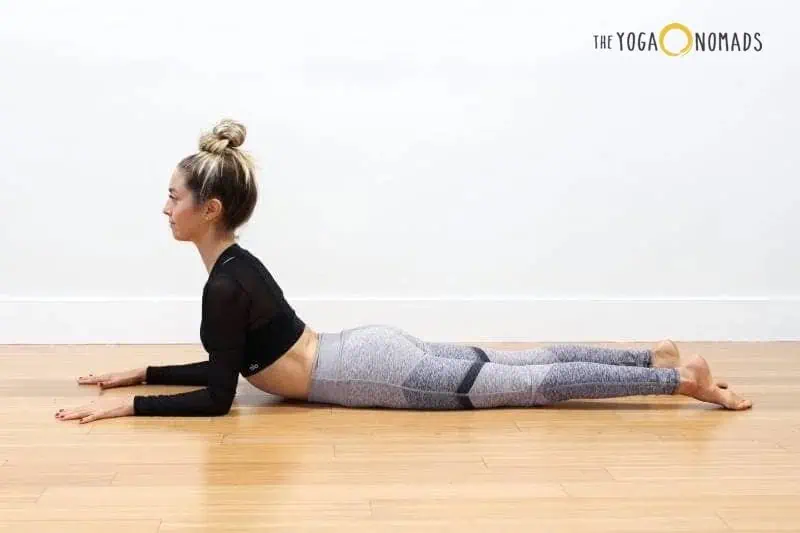
From a tabletop pose, shift your weight forward to come into a prone position. Bring your forearms to your mat, fingers pointing forward and elbows aligned underneath your shoulders.
Press your forearms into the floor to lift your upper body. Spread your shoulder blades wide across your upper back as you draw your heart forward between your shoulders.
Keep your gaze straight ahead as you hold for 5 to 8 breaths, then release gently back down.
Child’s Pose
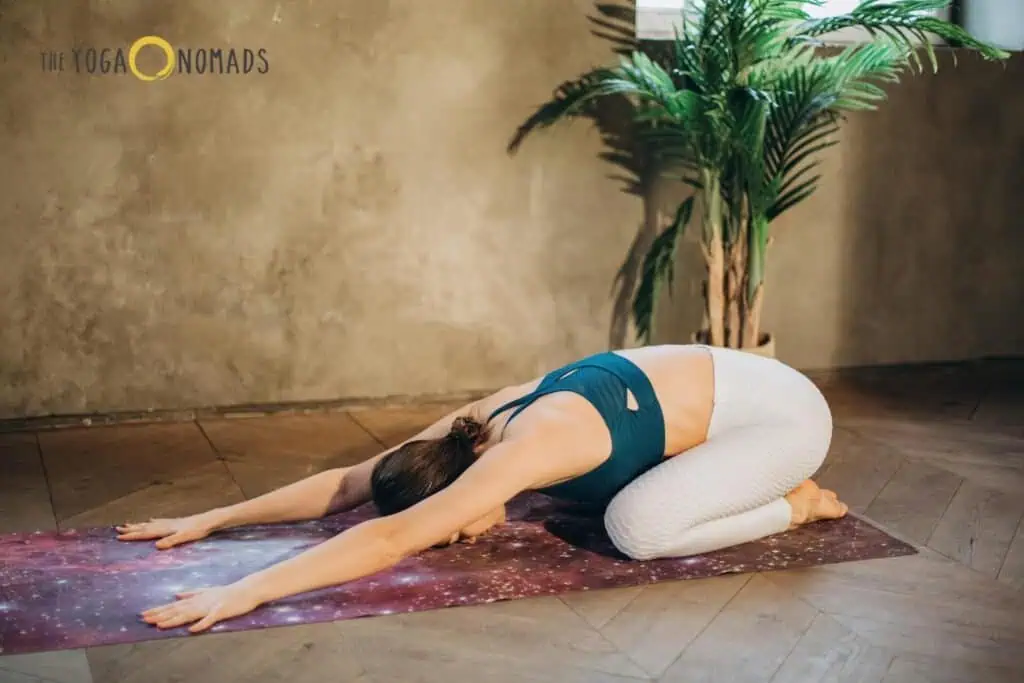
From Sphinx Pose, lower your chest and push into your hands to lift your hips. Then, keep drawing your hips back, bringing the sitting bones to your heels. Fold your torso over your thighs, rest your forehead on the mat or a prop, and hold for at least five breaths in this gentle yoga posture.
You can do the Child’s pose with your knees wide or together, whatever feels most comfortable. Likewise, you can relax your arms by your sides or extend them forward to create an additional stretch in the sides of your body.
Low Lunge

Return to Tabletop and step your right leg forward in between your hands into a low lunge. Keep your left knee on the floor and lengthen your spine, placing your hands on your mat on either side of your front foot.
Stack your right knee directly over your ankle, then let your hips sink down as you press forward, feeling a stretch in your thigh, groin, and hip flexors.
Hold for 5 to 8 breaths, then switch sides by bringing the left leg forward.
Downward Facing Dog
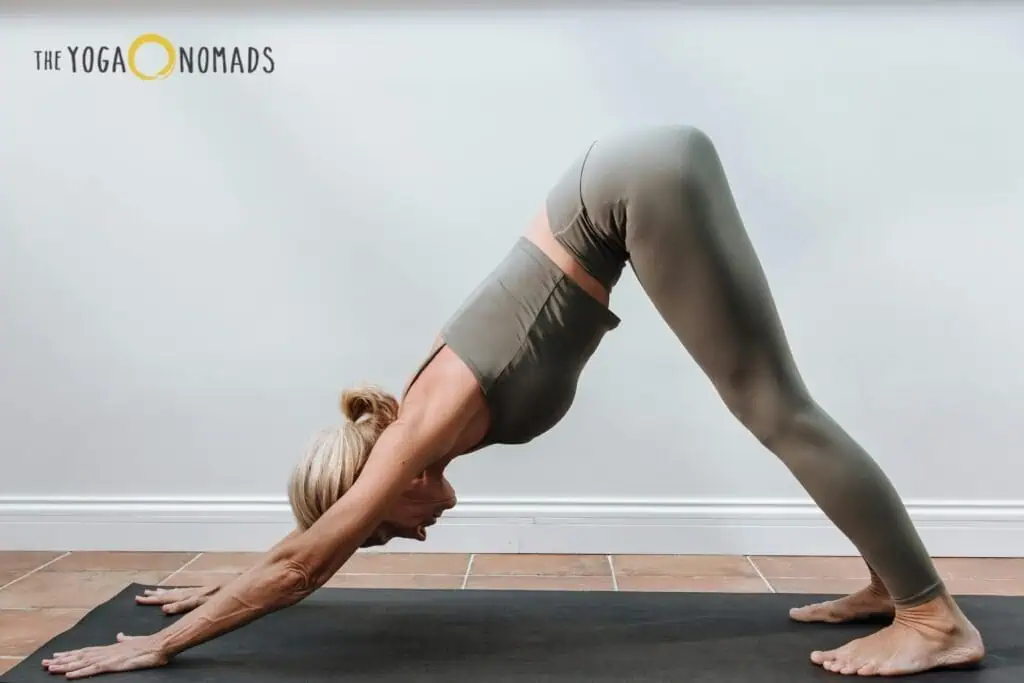
Begin on your hands and knees in Tabletop. Then, tuck your toes, engage your core, and press your hips up and back as you straighten your arms and legs, forming the shape of an upside-down “V” with your body.
Spread your shoulder blades wide and press your chest toward your thighs. If your hamstrings are tight, maintain a slight bend in your knees. Keep your head aligned with your spine, with your ears between your biceps.
Hold for 5 to 8 breaths before moving to your next pose. Please note: if you have a wrist injury or carpal tunnel syndrome, avoid this pose, as it puts weight on the wrist joints.
Standing Forward Fold
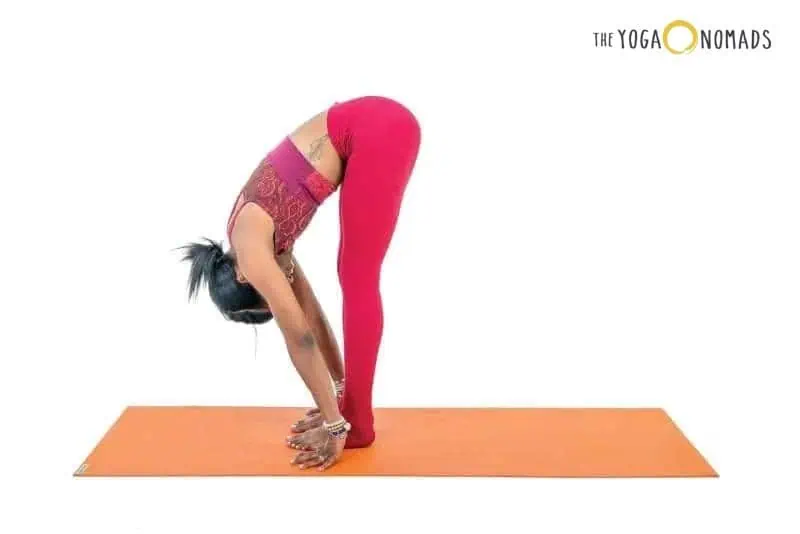
From Downward Dog, bend your knees and slowly walk your hands back to your feet, folding your torso over your thighs. Straighten your legs as much as possible without feeling any pulling in your lower back.
If your hamstrings are especially tight, maintain a slight bend in your knees. Let your arms and head hang, feeling the release in your back, spine, and the back of your neck.
Hold for 5 to 8 breaths, surrendering into the deep stretch.
Bound Angle Pose
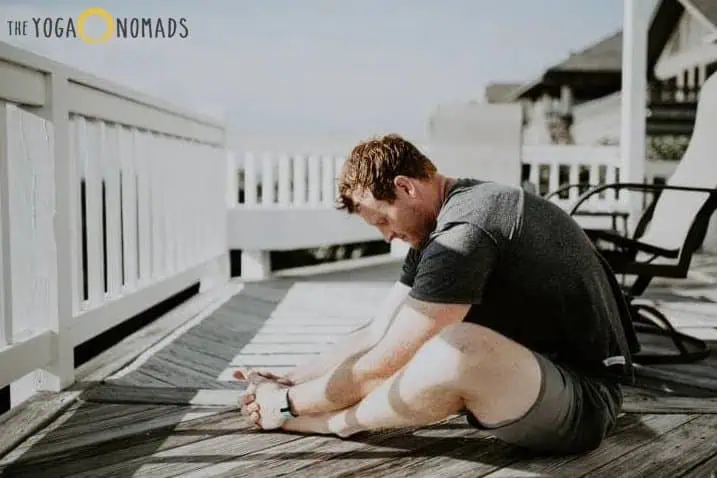
From Standing Forward Fold, walk your hands out to Downward Dog and drop your knees to come into a seated position. From here, open both knees to each side, bringing the soles of the feet together.
Adjust your position as needed; the closer the feet are to the body, the more intense the stretch in the groin and hips. Stay upright with a straight spine or fold forward from the hips, dropping your head.
Stay for 5 to 10 breaths, or longer if desired.
Reclined Figure Four
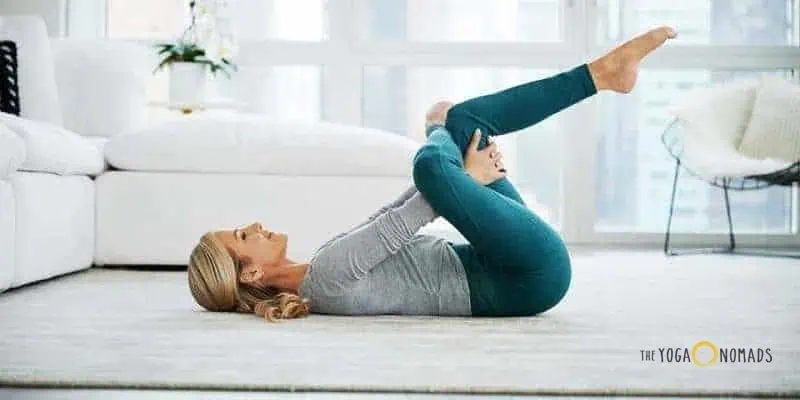
After Bound Angle, come onto your back with your knees bent and the soles of your feet on the floor. Lift your right foot and place your right ankle across your left thigh. Gently press your right knee forward and open.
If this stretch is enough, stay here. If you prefer a deeper stretch, lift your left foot and clasp your hands behind your left thigh. Then, gently pull the left leg towards you to deepen the stretch, ensuring your shoulders and hips do not lift off the floor.
Hold here for 5 to 10 breaths, and then repeat on the other side.
Banana Pose
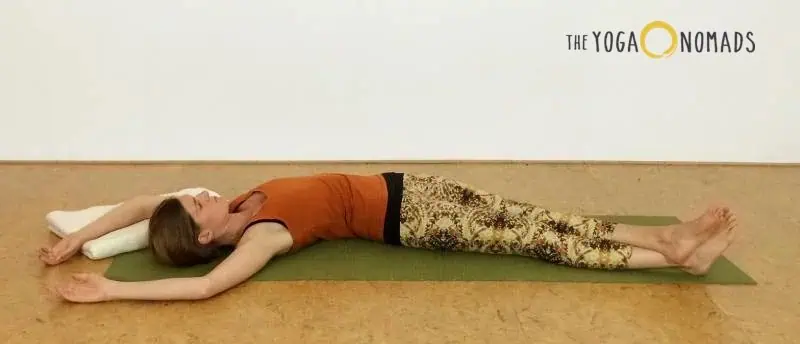
Begin in Savasana or Corpse Pose, lying on your back with your legs extended. Separate your legs, taking your feet a bit wider than your hips.
Shift your hips a couple of inches to your right. Then, swing your right leg over to cross your ankle over your left leg. Reach your arms overhead toward your left side to create a long, curved, banana shape with your body, feeling a stretch in your right hip flexors and side body.
Hold for 8 to 10 breaths, or longer if desired. Then, gently return to a wide-legged Savasana and repeat the pose on your other side, shifting your hips to the left and crossing your left ankle over your right leg.
Legs Up The Wall
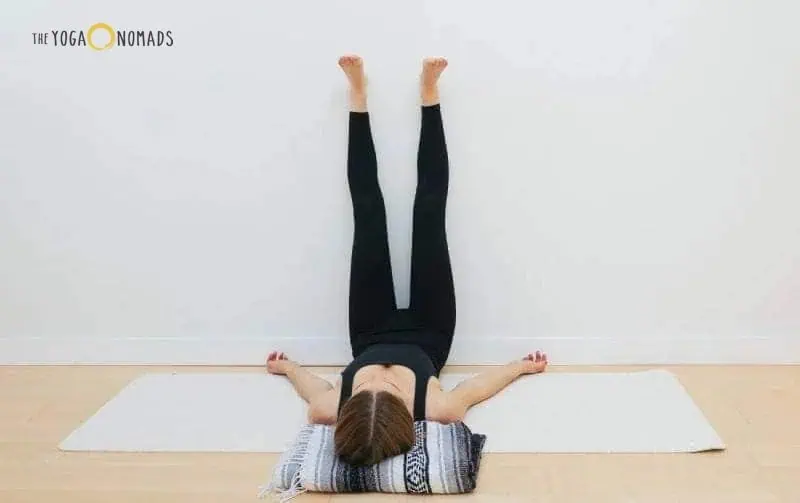
Move to a wall and shimmy your hips as close as possible. Lower yourself down to the floor and raise your legs, resting them against the wall. Scoot close enough that your glutes are in contact with the wall.
If you do not have clear wall space, you can do this gentle yoga pose using a chair instead. Position the seat of the chair in front of you, and place your legs on the chair’s seat, keeping your knees bent at a 90-degree angle.
Stay in this relaxing inversion for at least 10 breaths, or longer if desired. This restorative posture helps to relax the whole body, reduce stress, and improve circulation.
Corpse Pose
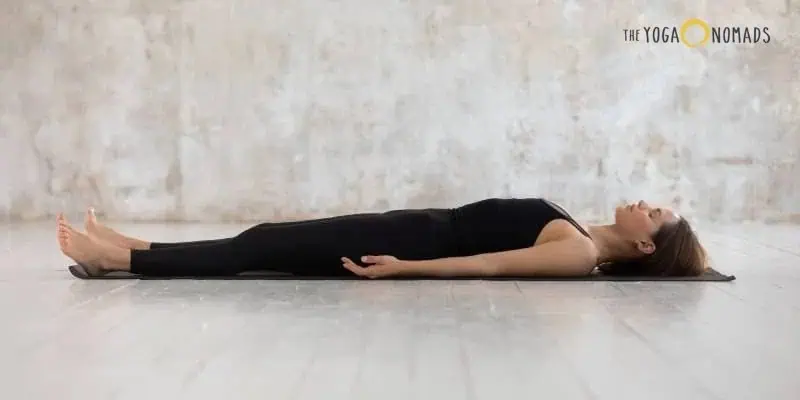
End your yoga sequence with Savasana, or Corpse Pose. Lie on your back and extend your legs along the mat. Let your legs relax completely, allowing your feet to fall open naturally.
Relax your arms by your sides with your palms open, and drop your shoulders towards the earth. Ensure your whole body is relaxed so your mind can enter a meditative state, your nervous system can rebalance, and your physical body can heal.
Remain in this pose for 5 to 10 minutes to enjoy the maximum benefit of your practice.
Final Tips For Getting Started With A Gentle Yoga Practice
When starting, remember that yoga is not just about the physical body but also the mind and soul. Thus, meditation practice and breathing exercises are just as crucial as learning physical postures.
I recommend starting and ending your practice with meditation and/or pranayama. One of the most accessible breathing techniques is alternate nostril breathing (Nadi Shodhana), which calms and rebalances the central nervous system. Including these other aspects of yoga will make your practice more holistic and wholesome, increasing the incredible benefits you receive.
Frequently Asked Questions
How often should I practice gentle yoga as a beginner?
Start with 2-3 sessions per week, allowing rest days between practices for your body to adapt and recover. Begin with 15-30 minute sessions and gradually increase to 45-60 minutes as you build strength and endurance.
What’s the difference between gentle yoga and other styles of yoga classes?
Gentle yoga focuses on slower movements, longer holds, and accessibility, while regular classes may include more challenging poses and faster transitions.
How long does it take to see benefits from gentle yoga?
Many people notice improved flexibility and relaxation within 2-4 weeks of consistent practice, while strength and balance improvements may take 6-8 weeks.
Do I need special equipment or props for gentle yoga?
While props like blocks, straps, and cushions can enhance comfort, you can start with just a yoga mat and household items like pillows or towels.
Can I do gentle yoga if I have injuries or physical limitations?
Yes, gentle yoga can often be modified for most conditions, but always consult your healthcare provider before starting any new exercise program.

